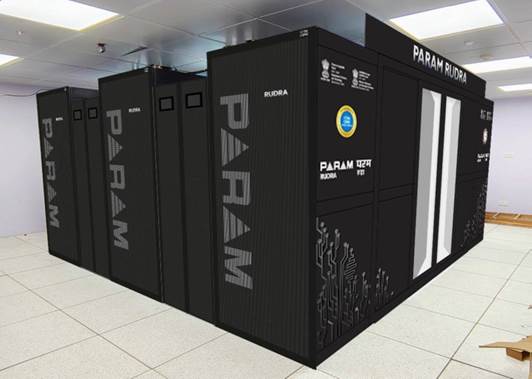NATIONAL : The inauguration of the PARAM Rudra supercomputer at the S.N. Bose National Centre for Basic Sciences (SNBNCBS) in Kolkata by the Prime Minister Narendra Modi brings high performance computing facilities to the Eastern Region, benefitting around 10-12 institutions and thousands of researchers working in this region.
Developed under the National Supercomputing Mission (NSM), the PARAM Rudra series under the aegis of Ministry of Electronics and IT (MeitY) and Department of Science and Technology (DST), including installations in Pune and Delhi, is set to revolutionize research across multiple fields such as advanced materials, high-energy physics, earth sciences, and cosmology, marking a significant advancement in India’s scientific and technological capabilities, according to the government release.
The PARAM Rudra supercomputer at S.N. Bose Centre, an autonomous institute of the Department of Science and Technology (DST) is expected to provide much-needed high-performance computing power to institutes in the Eastern Region. This facility will enable collaboration among the computational researchers in Institutes like Bose Institute, Saha Institute of Nuclear Physics (SINP), Indian Institute of Chemical Biology (IICB), and the Indian Institute of Science Education and Research (IISER) Kolkata. It will enable scientists in these institutions to perform complex calculations and simulations much faster, reducing the time required to solve intricate scientific problems.
The Government release also said, the 838 TFLOPS NSM facility is poised to significantly enhance research across a variety of scientific domains through advanced high-performance computing capabilities. In materials science it will help high-throughput Computational Materials Design, accelerate the discovery and design of new materials along with rapid identification and development of new materials.
Additionally, the supercomputer will be crucial for high-energy astrophysics research, providing insights into the fundamental properties of matter and the universe. It will help understand Non–Equilibrium Properties of Strongly Interacting Matter by conducting calculations related to dense matter as studied in the ALICE experiment at CERN and modelling the universe’s structure and dynamics, including the interplay of gravitational waves, high-energy photons, and astrophysical neutrinos. However, the benefits of the PARAM Rudra supercomputers extend far beyond the boundaries of scientific research. As the Prime Minister pointed out, the advent of such high-performance computing technologies will not only help India compete globally in areas like space exploration and semiconductor manufacturing but will also have a tangible impact on the everyday lives of citizens. The new capabilities of these machines are expected to play a crucial role in disaster management, economic growth, and in enhancing the ease of doing business, making them central to India’s progress in Industry 4.0. In addition to supporting advanced research, the PARAM Rudra supercomputer will significantly improve India’s ability to predict weather and climate-related phenomena.

